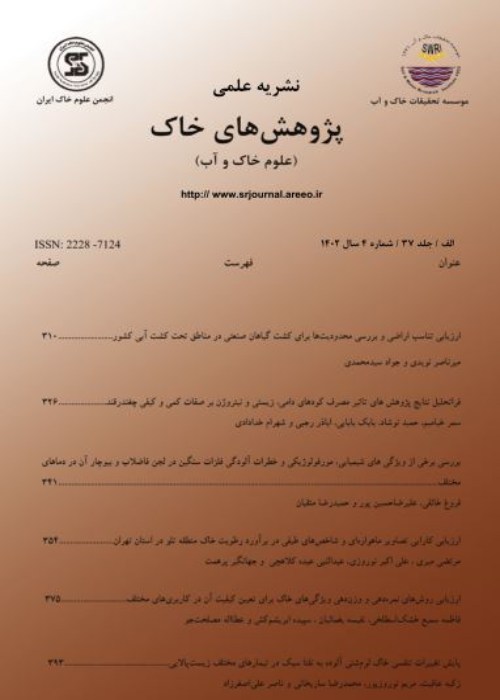Effect of Different Levels of Irrigation Water Salinity and Phosphorus on Some Properties of Soil and Quinoa Plant
One of the ways to use and exploit saline lands and water is to use salinity resistant cultivars, such as Quinoa plant. Managing nutrients such as phosphorus in saline soils can reduce the negative effects of salinity on plant growth and yield. In order to investigate the effect of irrigation water salinity (ECW) and phosphorus levels on some of the characteristics of Quinoa plant in greenhouse conditions, a factorial experiment was conducted in a completely randomized design with three replications. The treatments consisted of ECW at six levels: control (0.7), 3, 6, 9, 12, and 15 dSm-1, and phosphorus was added to the soil from the source of triple superphosphate at four levels, 0, 50, 100, 200 kg per hectare (equivalent to 0, 0.01, 0.02 and 0.04 grams of phosphorus in the pot from source of triple superphosphate). The results showed that with increasing ECW up to 15 dS m-1 (equivalent to ECe= 30.44 dSm-1), plant height decreased by 18.65% and panicle length by 52.4%. ECe reached 182.72 dSm-1 and sodium concentration in plant increased by 18.5%, compared with the control. Increasing phosphorus application to the soil up to 100 kg/ha increased plant height by 12.3%, panicle length by 8.8%, and phosphorus concentration in plant aerial parts by 12.5%, compared to the control. Comparison of the average interactions between salinity of irrigation water and phosphorus on plant height showed that salinity of 3 dS/m, at all levels of phosphorus, increased the plant height by 15.1%, in comparison with the control. Adding phosphorus up to 100 kg triple-super phosphate per hectare reduced the effect of salinity stress in the plant, but at 200 kg it exacerbated the effects of salinity and led to a sharp decrease in plant height and panicle length. The highest concentration of phosphorus was observed at 100 kg/ha phosphorus and 15 dS/m salinity, which increased by 92.9% compared to the control. Based on the results, quinoa can be a very good choice for saline and low-yielding lands.
- حق عضویت دریافتی صرف حمایت از نشریات عضو و نگهداری، تکمیل و توسعه مگیران میشود.
- پرداخت حق اشتراک و دانلود مقالات اجازه بازنشر آن در سایر رسانههای چاپی و دیجیتال را به کاربر نمیدهد.


